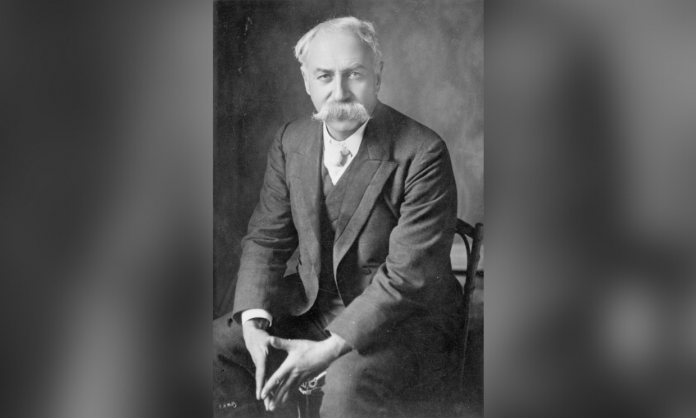By Peter P Dobbing
Back in the day, composers and songwriters of popular music often gained inspiration from the names of trains and railways. This was particularly so in America where many popular pieces such as The Chattanooga Choo-Choo, which according to the song departed Pennsylvania Station, New York, on Track 29 at about a quarter to four each day. Also we have the song of the Atchison, Topeka and Santa Fe Railway that used mighty Chieftain Engines to travel the 1,700 miles from Philadelphia to Santa Fe.
The AT and SF discovered a unique way of boosting its passenger traffic. Land along the route was sparsely populated so after 1863 the US government began offering cheap land deals to would be settlers. The rail company opened sales offices and if any passenger chose to stay then the price of their rail fare was deducted from the price of the land. The songs and the railway did very well.
It was not the same on this side of the Atlantic, I can think of no popular songs that celebrated the GWR or even the LNER. There was a tune in favour of the Coronation Scot but undoubtedly the best of all came from Ireland. The tale of the West Clare Railway written by Percy French in 1902 is a true classic which has stood the test of time for over 100 years. I won’t repeat the lyrics but readers will recognise the title and maybe sing them mentally.
Many attempts were made to create a railway in West Clare but the remoteness of the area and insufficient population to support profits led to failure. When parliament passed the Tramways Act in 1883 it contained provisions for building 3 foot wide narrow gauge single tracks, thus halving the costs and making a profit more realistic.
Building began in 1885 with Charles Stewart Parnell cutting the first turf at Miltown Malbay with the intention of building the line as far as Ennis. One William Martin Murphy was appointed main contractor and he purchased 4 steam locomotives from Bagnalls of Leeds. Later he was to regret this. While the WCR was being built some directors felt that line should also encompass the towns of Kilrush and Kilkee in the west of the county.
This led to plans for building a South Clare Railway but there was no agreement as to the precise route. Some thought it should cross the tidal Poulnasherry Bay but contractor Murphy said that he could not calculate the costs of making the line sea resistant or guarantee the results. It was decided that the SCR should go to Moyasta where a division of the line would connect with the WCR at Miltown Malbay.
By the time both railways were operational in 1892 they had for all intents and purposes merged into one, the West Clare Railway. The combined line Ennis to Kilkee was now stretched to 48 miles and had gradients as severe as 1 in 50, rather more than the pulling power of the original locomotives.
New engines were purchased from Dūbs & Co the first of these being named Slieve Callan which was later preserved. Over the years the WCR operated a fleet of eighteen steam locomotives until the 1950’s when under CIÉ management the West Clare Railway became a pioneer in the operation of diesel traction.
From the early 20th century the WCR did well. There were 5 trains per day in each direction with more than 200,000 passengers and 80,000 tonnes of freight and livestock being carried. During the War of Independence and the Civil War the railway was very much on the front line. To their credit railway staff defied their directors and refused to carry arms for British soldiers.
There were different problems during World War II. With coal being almost unobtainable the engine crews had to resort to burning turf, always in good supply. Unfortunately turf has but a fraction of the calorific value of coal. The crew needed to burn prodigious quantities of the stuff in order to get a head of steam. Sometimes the boiler could not generate enough and the engine would grind to a halt until it got ‘better’. When the line closed on 1st January 1961 the WCR was the last narrow gauge railway operating passenger services in Ireland.
And just to close it might be worth just retelling the tale how Percy French came to write his song. On Monday, the 10th of August, 1896, French travelled from Sligo to Kilkee to give a concert at Moore’s Hotel in that town. Apparently the train made slow progress and the driver stopped several times for no apparent reason.
Consequently French arrived 5 hours late and the assembled audience had gone home. The ballad caused great embarrassment to the railway company, and it was mocked in music halls throughout Ireland and Britain.
The WCR instigated a libel action against French but when he arrived at the hearing he was late. When the judge expressed his displeasure at his lateness French responded by saying ‘Your honour, I travelled by the West Clare Railway’. The case was dismissed and French awarded costs.








